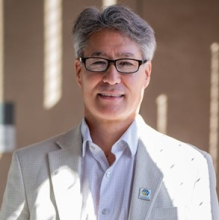MSE 298 Seminar: Mechano-Electrochemical Phenomena at Ceramic Electrolyte Interfaces

Abstract: The recent emergence and discovery of new ceramic ion conductors (CICs) with fast ionic conductivity at near-ambient temperatures creates the opportunity to push the frontiers of electrochemical energy conversion and storage. The ability to replace traditional liquid electrolytes with ceramics has the disruptive potential to improve safety and enable next generation technologies including solid-state batteries with metal anodes and impermeable membranes to prevent crossover in redox flow batteries for long duration energy storage (LDES). Enabling the next generation of electrochemical conversion and storage, however, requires fundamental research to understand and control the emergent mechano-chemical environments that arise when CIC materials are interfaced with other dissimilar materials. The underlying physics that control the stability and kinetics of all solid-state interfaces are fundamentally different from interfaces in state-of-the-art Li ion technology. Moreover, the mechano-electrochemical
phenomena that occur during discharge and charge at the Li-CIC interface are considerably different.For example, during charging at higher rates Li metal filaments can initiate at defects and propagate through relatively hard ceramics. During discharge, if the Li stripping rate is sufficiently high and the pressure and temperature is sufficiently low, voids form at the interface causing current focusing and eventual permanent degradation.
The U.S. Department of Energy is supporting the collaborative and interdisciplinary project Mechano-chemical Understanding of Solid Ion Conductors (MUSIC). The overarching scientific mission of MUSIC is to reveal, understand and model, and ultimately control the chemo-mechanical phenomena underlying the processing and electrochemical dynamics of CICs for clean energy systems. This presentation will consist of highlights from MUSIC to include topics such as anode-free manufacturing and operando impedance spectroscopy to analyze mechano-electrochemical phenomena at the Li-CIC interface.
References
1. https://pubs.acs.org/doi/10.1021/acsenergylett.5c00149
2. https://www.nature.com/articles/s41563-024-02055-z
3. https://www.nature.com/articles/s41563-024-02006-8
Bio: Jeff Sakamoto joined UC Santa Barbara’s College of Engineering faculty in November 2023 with joint appointments in the Mechanical Engineering and Materials Departments. He has > 25 years of experience studying and translating electrochemical materials into energy storage technologies and is a UC Irvina alumnus (1997, M.S. materials science and engineering). Sakamoto’s research group designs and synthesizes ceramic electrolytes, tests their electrochemical and mechanical properties, and develops manufacturing processes to help commercialize high performance, safe and low-cost batteries. His work has advanced the area of ionically conducting ceramics, or ceramic ion conductors (CICs), which are critical materials for solid-state and flow cell batteries for EVs and the electrical grid, respectively. Prior to joining the UCSB faculty, Sakamoto spent 10 years at the University of Michigan, where he served as director of Michigan’s Department of Energy Frontiers Research Center, called the Mechano-chemical Understanding of Solid Ion Conductors), MUSIC. Sakamoto was also a faculty member at Michigan State and senior engineer at NASA/Caltech/Jet Propulsion Laboratory for seven years. He is a fellow of the Electrochemical Society, Kavli Frontiers of Science Fellow, a recipient of the Major Space Act Award from the NASA Inventions and Contributions Board, the primary contributor on nearly three dozen patents, and founded and co-founded three startups. Sakamoto received his doctorate in materials engineering from UCLA and was a commissioned officer in the U.S. Army.
Share
Related Content
| Attachment | Size |
|---|---|
| 1.67 MB |
Upcoming Events
-
UCI CEE FALL MIXER - 2025
-
CEE Ph.D. Defense Announcement: Breaking New Ground - Excavation Performance in Tar-Infused and Conventional Soils for LA Metro D-Line Extension Project
-
MSE 298 Seminar: Tunable Optical Metasurfaces And Zero-Index Materials
-
EECS Seminar: Terahertz metasurface quantum-cascade vertical-external-cavity surface-emitting-lasers (VECSELs)
-
EECS Seminar: AI-Driven Design Automation for Multi-Chip Integration in AI Chips
